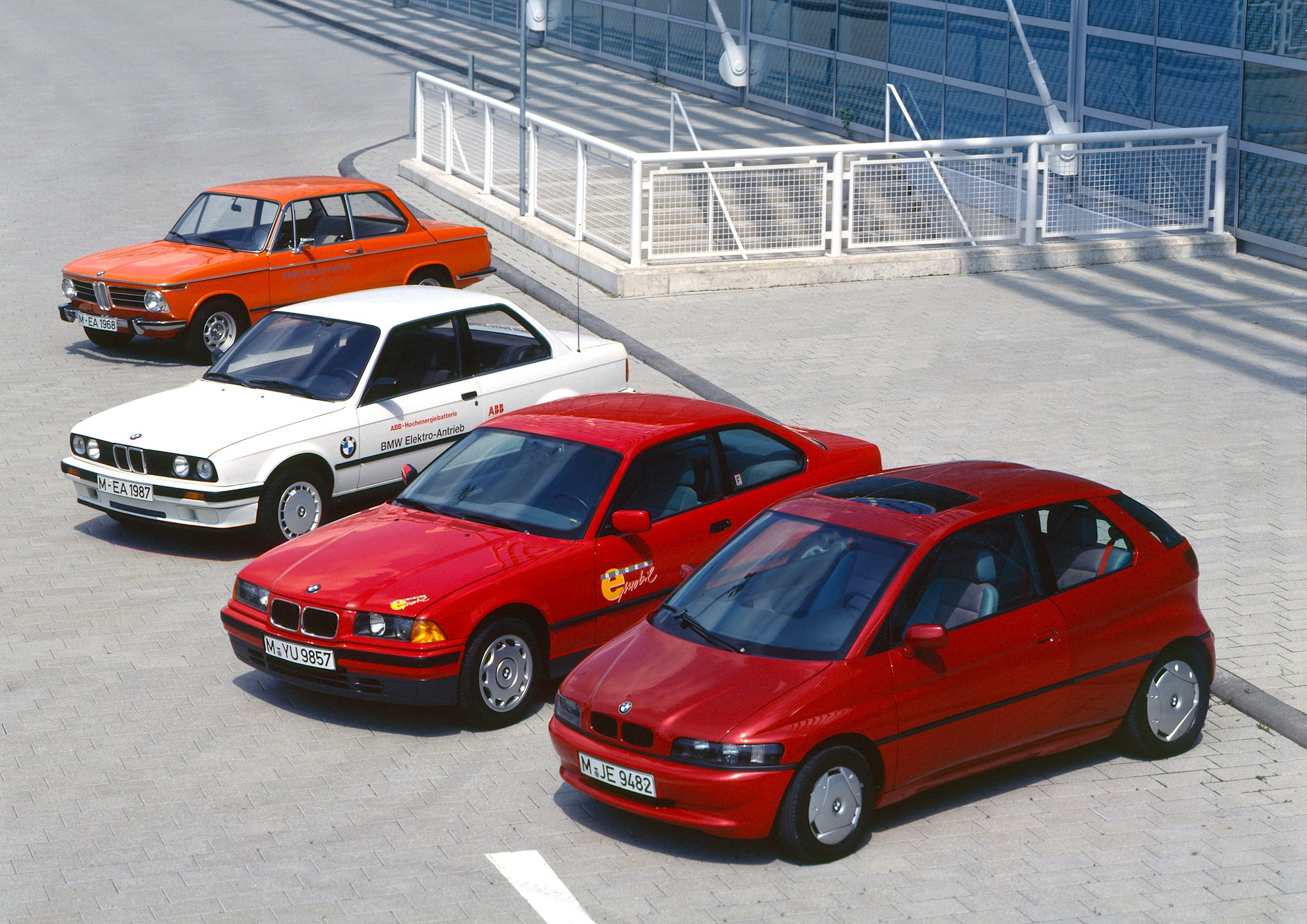It’s a year of important 10th anniversaries: DRIVEN passed its first decade in 2021 of course, but it’s also 10 years since BMW founded its i-brand, created to design and manufacture Electric Vehicles (EVs).
The BMW i3 and i8 are only one chapter in the long history of BMW Group’s research and development into electrified mobility. Since the 1970s, we’ve always been a challenger brand, resilient to the times, and the rapidly changing futurescape of electric vehicles will see BMW Group coming up with even more revolutionary and cutting-edge solutions,” says Karol Abrasowicz-Madej, Managing Director of BMW Group New Zealand, on this important anniversary.
We’re kicking off a series of articles around sustainable motoring, in partnership with BMW, by taking a look at 10 landmark EVs in the marque’s history.
1602 Elektro (1972)
An EV test platform based on the 02 Series had 12 standard 12-volt lead-acid batteries and a DC shunt motor by Bosch, which generated up to 32kW. The battery pack could be removed as a unit and replaced by a freshly charged set.
The 1602 Elektro was deployed for test purposes as a support car for long-distance and marathon runners at the Munich Olympic Games in 1972.
LS Elektro (1975)
BMW built another EV test vehicle in 1975, based on the LS. Ten Varta lead batteries with “Aquamatik” (central water refill and degassing) were intended to improve performance and a new DC inverse speed motor from Bosch was used.
This was the first time that a charger, charging cable and automatic limit switch were included on board, allowing the batteries to be recharged in 14 hours via a domestic power socket.
325iX (1987-90)
In 1981, BMW launched a research project entitled Electric Car with High-Energy Battery ("Elektroauto mit Hochenergiebatterie") in cooperation with Asea Brown Boveri (ABB). The centrepiece was a sodium-sulphur battery that could be connected to a normal power socket.
The energy density was increased by a factor of three compared with lead batteries, while reducing weight and volume.
The first prototypes went into operation in 1987: a test fleet of eight, mostly for government agencies, based on the BMW 325ix (pictured above left, with the 3 Series Elektro, centre, and 3 Series Elerctric, right).
The 325iX vehicles were converted from all-wheel to front-wheel drive; the AWD version was used because the shaft drive for the rear axle/differential could be taken out of the car to make space for the battery.
E1 (1990-94)
Using the ABB sodium-sulphur battery, BMW developed a bespoke EV that might appeal to brand-loyal customers as an everyday car – foreshadowing the i3 that was to come over 20 years later.

The E1 (above, right) was presented at the International Motor Show (IAA) in 1991, with a body made of extruded aluminium sections and an outer skin of plastic and aluminium. The sodium-aluminium battery was 19.2 kWh; the electric motor generated 32kW and was positioned in the rear axle with a direct drive shaft to the rear wheels.
A second stage E1 was developed in 1993, with upgraded battery and energy regeneration/storage technology. Five examples were built.
3 Series Elektro (1992-95)
A total of 25 test vehicles were produced for trials: public tests from 1992-96 as well as cars for the Bavarian state government.
3 Series Electric (1995-97)
Based on the E36 coupe, this was an advanced development of the Elektro, intended to take the technology to a stage of near production-readiness.
Mini E (2008-09)
Using 612 cars on three continents and in six countries, 610 private and 490 fleet users covered more than 16 million kilometres in the Mini E and gave feedback to BMW. As part of “project i”, the experience was used for the development of the BMW i3.
The E was based on a Mini Cooper, electrified and equipped with a 152kW motor and 29kWh battery (which took the place of the rear seats), giving a range of 130-160km. The vehicles were mostly converted by hand at the Oxford plant.
ActiveE (2010)
The ActiveE was another creation of “project i”, a conversion of the 1 Series coupe into a practical four-seat EV.
The underpinnings were also an important final step towards the production i3
i3 (2013-)
The i3 was the first production vehicle launched under the sub-brand BMW i and a ground-up new model, with Carbon Fibre Reinforced Plastic (CFRP) construction, rear-drive and a low centre of gravity.
i8 (2014-20)
The next new BMW i car was a sports model, with a new Plug-in Hybrid Electric Vehicle (PHEV) powertrain that combined a three-cylinder turbo-petrol engine with a battery pack good for 37km of zero-emissions running.
A roadster version was added in 2017, while upgrades to both models also meant an increase in EV range to 55km.
New pure-electric models to come include the iX3 and iX SUVs later this year, and the i4 Gran Coupe in 2022.




